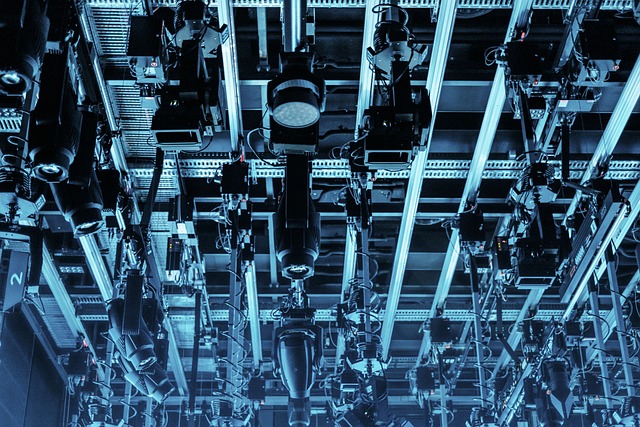Advanced RF Microneedling is a cutting-edge acne scar treatment that combines radiofrequency energy with precise microneedling to stimulate collagen production and enhance skin rejuvenation. Compared to traditional methods like chemical peels, laser therapy, or subcision, it offers faster healing times, minimal downtime, and improved skin texture, making it a safer and more effective option for deep scars. This innovative procedure is suitable for various skin types and provides long-lasting results with reduced risks. Consulting a dermatologist remains crucial to select the best individualized treatment approach.
Acne scars can leave lasting marks on one’s self-esteem, but advancements in dermatology offer hope. This comprehensive guide delves into the world of acne scar treatments, contrasting traditional methods with the emerging success of RF (Radio Frequency) Microneedling. Understanding how acne scars form is key to effective treatment. We explore time-tested approaches and highlight the benefits of Advanced RF Microneedling, its mechanism, and how it compares to conventional techniques. Safety considerations are also addressed to help readers make informed decisions for their skin’s well-being.
Understanding Acne Scar Formation: A Comprehensive Overview

Acne scars form when inflammation damages the skin’s collagen and elastin fibers, leading to depressed or elevated skin areas. This process occurs in three main types: atrophic scars (depressed scars), keloid scars (elevated scars), and pigmented scars (darkened patches). Atrophic scars are the most common type resulting from acne and are caused by the destruction of the dermis during an acute inflammatory response.
Advanced RF Microneedling, a revolutionary treatment, offers a targeted approach to addressing these scars. It involves using fine needles or radiofrequency energy to create tiny channels in the skin, stimulating collagen production and enhancing skin texture. This procedure promotes cellular regeneration, helping to soften depressed scars and improve overall skin appearance.
Traditional Acne Scar Treatment Methods: Time-Tested Approaches

Traditional Acne Scar Treatment methods have been a part of dermatological practice for decades, offering various time-tested approaches to address scars left by acne. One common technique involves chemical peels, which use specific chemicals to exfoliate the skin, promoting new tissue growth and improving scar appearance. Another popular method is subcision, where a needle is used under local anesthesia to fragment fibrous tissue beneath the skin’s surface, allowing for better healing and reduced scarring. Laser therapy has also been a game-changer, with fractional laser treatments encouraging collagen production and refining skin texture.
While these methods have shown effectiveness, Advanced RF Microneedling stands out as a modern, innovative solution. This procedure utilizes radiofrequency energy delivered through fine needles to stimulate collagen and elastin production on a cellular level. Unlike traditional methods that primarily target the surface, RF Microneedling goes deeper, offering potential for more significant and long-lasting results in scar reduction and skin rejuvenation.
The Rise of RF (Radio Frequency) Microneedling for Scar Reduction

In recent years, the beauty industry has witnessed a significant shift towards advanced RF (Radio Frequency) Microneedling as a revolutionary scar reduction treatment. This innovative procedure leverages the power of radio frequency energy combined with precise microneedling to stimulate collagen production and promote skin rejuvenation. By creating controlled micro-injuries in the skin, it triggers a healing response that results in improved texture and reduced appearance of acne scars.
Compared to traditional methods, advanced RF Microneedling offers several advantages. It provides more targeted and effective collagen stimulation, leading to faster and longer-lasting results. The non-invasive nature of the treatment makes it an attractive option for those seeking a safer and less painful alternative to surgical or chemical scar treatments. Moreover, the use of radio frequency technology ensures deeper penetration and better absorption of active ingredients, further enhancing the overall effectiveness of the procedure.
How Advanced RF Microneedling Works Its Magic

Advanced RF Microneedling is a revolutionary treatment that combines radiofrequency energy with microneedling technology to target acne scars effectively. This method works by creating tiny punctures in the skin, stimulating collagen production and enhancing skin rejuvenation. The radiofrequency component heats the deeper layers of the skin, promoting cellular repair and growth while the microneedles create micro-channels that allow better absorption of skincare products.
This dual action approach not only helps to break down scar tissue but also improves skin texture and elasticity over time. Unlike traditional treatments, Advanced RF Microneedling offers a more precise and controlled way to address acne scars, providing patients with noticeable improvements in skin appearance and feel without the potential side effects of harsher methods.
Comparing the Efficacy and Benefits of RF vs Traditional Techniques

When comparing Acne Scar Treatments, Advanced RF Microneedling (RF) and traditional techniques each have their unique strengths and benefits. RF Microneedling, for instance, involves using fine needles to create controlled micro-injuries in the skin, which stimulates collagen production and boosts skin rejuvenation. This advanced technique offers several advantages over conventional methods, such as faster healing times, minimal downtime, and improved overall skin texture.
On the other hand, traditional acne scar treatments like chemical peels, laser therapy, and fillers have their merits too. Chemical peels use chemicals to exfoliate the skin, removing damaged layers and promoting new skin growth. Laser therapy targets specific pigments and tissue types to remodel scarred areas. Fillers provide immediate volume restoration by injecting substances like hyaluronic acid into depressed scars. While effective, traditional methods may carry longer recovery periods, higher costs, or potential side effects compared to RF Microneedling.
Safety and Side Effects: Considerations for Each Treatment Method

When considering acne scar treatments, safety and side effects are paramount. Both Advanced RF (Radio Frequency) Microneedling and traditional methods have their merits and potential drawbacks. RF Microneedling involves using tiny, fine needles to create controlled micro-injuries in the skin, stimulating collagen production to reduce scarring. While generally safe when performed by a qualified professional, it can cause temporary redness, swelling, and minor bleeding. In rare cases, infections or pigment changes may occur.
On the other hand, traditional treatments like chemical peels, laser therapy, and fillers also carry their own set of considerations. Chemical peels use chemicals to exfoliate the skin, improving texture but potentially leading to skin irritation or sensitivity. Laser therapy can be effective but may result in temporary redness, swelling, and changes in skin color. Fillers offer instant results but require repeated injections and may cause discomfort, bruising, or an uneven skin surface. It’s crucial to discuss these risks and benefits with a dermatologist to determine the most suitable treatment for individual needs.
Choosing the Right Acne Scar Treatment: A Decision Guide

Choosing the right acne scar treatment can be a daunting task, as various options are available with different levels of effectiveness and potential side effects. It’s crucial to understand your skin type, the severity of your acne scars, and your individual preferences before making a decision. One emerging option that has gained significant attention is Advanced RF Microneedling.
This innovative procedure involves using radiofrequency energy in conjunction with microneedling to stimulate collagen production and improve skin texture. Compared to traditional treatments like chemical peels or laser therapies, Advanced RF Microneedling offers a more precise and controlled approach. It can be particularly effective for deep acne scars, providing long-lasting results without the potential risks associated with more aggressive procedures. Additionally, it’s generally considered safer and more comfortable for most skin types, making it an appealing choice for those seeking a minimally invasive solution.
